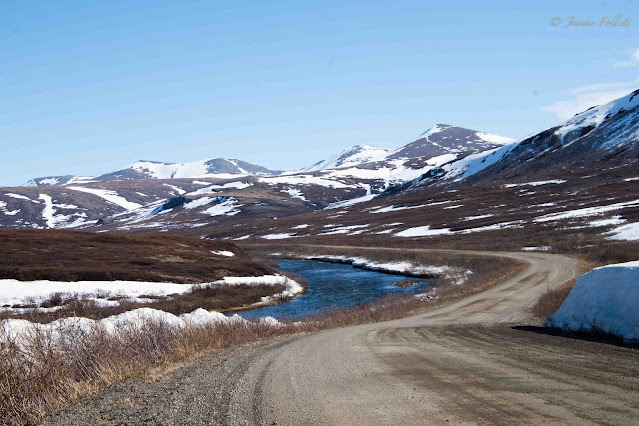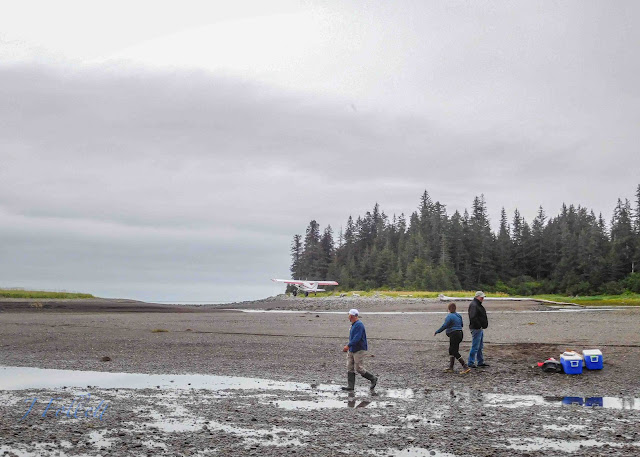Off and Flying
 |
| L-R, me, Alicia, and Eddie. Karl Arceneau photo |
I wake to the tantalizing aroma of frying bacon and lie in my sleeping bag thinking about the no-no of bacon in bear country.
I’ve always heard and believed that carrying or cooking bacon when tent-camping in the wild is a sure way to bring hungry, unmannered bears to your camp. This morning, I have to laugh.
Our tent camp in Lake Clark National Park and Reserve is surrounded by flimsy white tape that is electrified and is meant to keep the bears out of camp. So far it’s worked because there is still bacon for me when I finally get out of my sleeping bag.
Even though the electric tape is unhooked during the day.
 |
| As feared, it's a cloudy day as we take leave of Shelter Creek. |
My bags are packed. This is our last morning at Shelter Creek and very soon our transportation will arrive to take us a little way north up the coast of Cook Inlet to Silver Salmon Creek Lodge. Imagine! Running water. Showers. And, uh-oh, mirrors. I’ve been wearing the same clothes for three days, day and night.
Ronnie sets about frying eggs to go with the bacon and—Ronnie's innovation—Blowtorch Toast. It’s too chilly here for butter to be spreadable so a propane torch does the butter-melting honors.
 |
| Blowtorch Toast |
 |
| L-R: Alicia, Karl, and Ronnie |
We learn that our co-host Karl is the mayor of a small town in Louisiana and that Ronnie is an artist and muralist of some fame. He’s also a musician with his own band. They are the best hosts owner David could have chosen for this camp after the regular host had to leave early.
Oliver arrives in his Maule light plane on HUGE Tundra tires and lands on the gravel bar that appears at low tide in front of camp. He drops off some groceries and other supplies, then takes off and lands on the beach where he has more “runway.”
Alicia is the first to go with Oliver, along with luggage. Eddie, who has been dawdling, has to make a sandwich out of his breakfast and carry it to the beach to await Oliver’s return.
 |
| Eddie, left, with his impromptu breakfast sandwich, and Karl |
I look toward Iliamna volcano but it's all fogged in.
|
Our bags are waiting for us on the bank at camp. We need to get them to the beach.
 |
Saying good-bye to Karl ands Ronnie.
|
 |
| Three days, same clothes, no running water, no shower, no mirror. Karl took this photo as I was settling into Oliver's Maule. |
Next: Our afternoon at Silver Salmon Creek.





















































